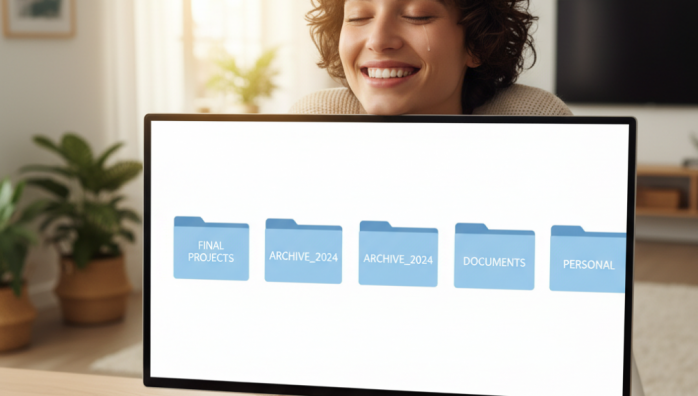From Chaos to Clarity: How I Implemented the PARA Method in One Weekend
by admin in Productivity & Tools 19 - Last Update November 25, 2025

My digital life was a disaster. Seriously. I had files scattered across three different cloud services, a desktop that looked like a digital collage of forgotten downloads, and a notes app that was more of a junk drawer than a second brain. I felt a constant, low-level anxiety that I was losing important information. After hearing about the PARA method for what felt like the hundredth time, I decided to dedicate one weekend to see if it could actually live up to the hype. I was skeptical, but I was also desperate.
The promise of PARA that finally hooked me
For those who aren\'t familiar, PARA stands for Projects, Areas, Resources, and Archives. It’s a digital organization system developed by Tiago Forte. What appealed to me wasn\'t its complexity, but its supposed simplicity. The idea is to organize all your digital information not by category (like \'work\' or \'personal\'), but by how actionable it is.
- Projects: Short-term efforts in your work or life that have a goal to be achieved. (e.g., \'Plan vacation\', \'Launch website Q3\').
- Areas: Long-term responsibilities with a standard to be maintained. (e.g., \'Health\', \'Finances\', \'Apartment\').
- Resources: Topics or interests that may be useful in the future. (e.g., \'Productivity techniques\', \'Gardening\', \'Favorite recipes\').
- Archives: Inactive items from the other three categories. (e.g., \'Completed projects\', \'Old interests\').
Honestly, the shift from organizing by \'what it is\' to \'when I\'ll use it\' was the lightbulb moment for me. It felt intuitive, like it was designed for how my brain actually works under pressure.
My weekend implementation: the messy reality
I set aside a Saturday and Sunday. My goal wasn\'t perfection, but progress. Here’s how I broke it down, including the hurdles I didn\'t expect.
Day 1: The big setup and the brutal sort
The first step was easy: I created four folders named \'1. Projects\', \'2. Areas\', \'3. Resources\', and \'4. Archives\' in my main cloud drive. I added the numbers to keep them in order. Then came the hard part. I created a fifth folder called \'0. INBOX\' and dragged *everything* from my desktop and downloads into it. Looking at that massive, chaotic folder was daunting. I spent the rest of the day just processing that inbox, moving files one by one into one of the four PARA folders. It was tedious, but also strangely satisfying. The biggest struggle was distinguishing between an Area and a Resource. I decided if it was an ongoing part of my life (\'Finances\'), it was an Area. If it was just a topic of interest (\'Stoic philosophy\'), it was a Resource.
Day 2: The apps and the first review
On Sunday, I tackled my notes app. I replicated the same four-folder structure. This was faster because many notes were already project-related. The real magic happened when I was done. For the first time, I could look at my \'Projects\' folder and see a clear, concise list of everything I was actively working on—just five items. The overwhelming feeling was gone, replaced by a sense of calm control. I realized I had been mentally juggling dozens of \'open loops\' that weren\'t even active projects.
Mistakes I made that you can avoid
It wasn\'t a perfectly smooth process. My first mistake was making my \'Areas\' too granular. I had folders for \'Car,\' \'Apartment,\' \'Health,\' and so on. It became too much to manage. I later merged them into broader categories like \'Home\' and \'Wellness.\' My second mistake was trying to perfectly categorize every single resource. I wasted an hour trying to decide if an article about cooking was a \'Resource\' or part of my \'Health\' Area. My advice now is: don\'t overthink it. Make a quick decision and move on. You can always change it later. The goal is to get things out of your inbox and into a trusted system, not to build the perfect library of congress.
Ultimately, that weekend didn\'t just declutter my computer; it decluttered my mind. The clarity I gained by defining my active projects and separating them from everything else has been the single biggest productivity boost I\'ve had in years.














